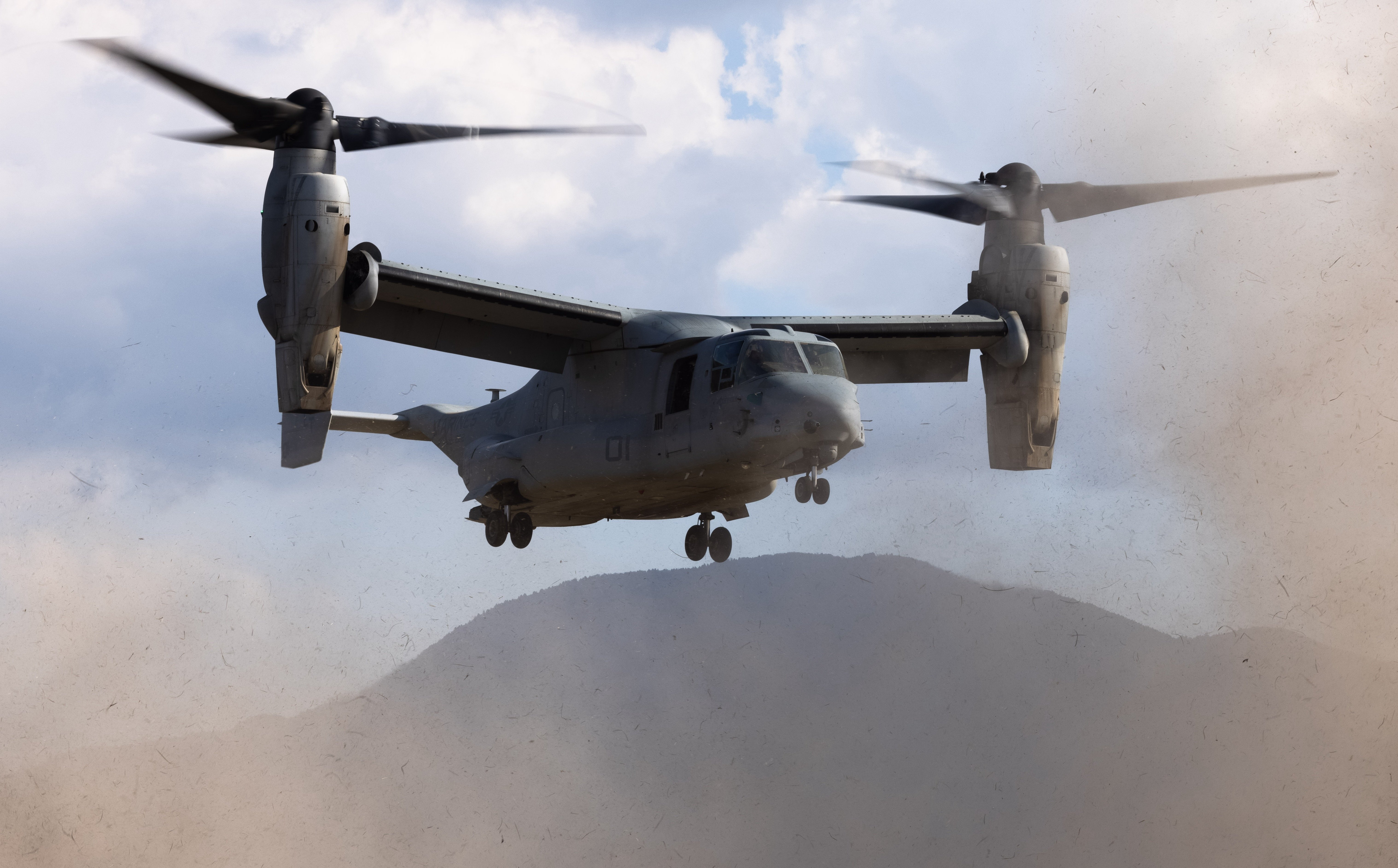
Flights of U.S. and Japanese MV-22B Osprey flights could resume as early Thursday, the Japanese Ministry of Defense said in a Wednesday statement.
The announcement follows a Friday MOD joint press release with U.S. Forces Japan (USFJ) following Naval Air Systems Command clearing the Osprey to resume operations again. The MoD said the USFJ and the government of Japan were coordinating on the timeline for the resumption of Osprey flight operations in Japan by the U.S military and Japan Ground Self-Defense Force.
The JGSDF operates a total of 14 Ospreys with three more to be delivered to complete an order of 17 aircraft. The JGSDF Ospreys are currently stationed at JGSDF Kisarazu base, which is near Tokyo with a planned relocation to Saga Airport on the main island of Kyushu as part of Japan’s strategy for the defence of its southwest islands.
Wednesday’s statement said that while each U.S military service will resume operations promptly based on their own service guidelines, the U.S. and Japan will coordinate on the resumption of Osprey flights in Japan. The U.S. military operates three different Osprey versions in Japan, the Marine Corps MV-22B, the Navy’s CMV-22 carrier onboard delivery logistics aircraft and the Air Force’s CV-22B Special Operations Osprey. Both the U.S. military and the JGSDF plan to restore their mission capabilities in stages, according to the statement.
“This basic flight is carried out at the discretion of the commander of each unit after taking necessary safety measures and preparations, but Ospreys of the Japan Ground Self-Defense Force and the U.S. military in Japan will be operated after March 14th,” reads the statement, which added that this will be done sequentially with aircraft that are ready to fly.
The JGSDF Ospreys, following their first flight, will only operate around their base for the time being and proceed onto the next stage of training once initial flight proficiency has been achieved. The U.S. had also confirmed to the Japanese officals that that it would resume flights in stages.
“Through this careful process, units that have regained proficiency in basic skills will then undergo basic missions and more advanced training to recover the ability to respond to required missions,”, according to the statement.
The statement also emphasized that the MOD and USFJ have reaffirmed that ensuring flight safety is the top priority when resuming Osprey operations. The MoD also said it “will take all necessary measures for the defense of Japan, including the southwest region.”
The mention of the southwest region is notable given that the area contains a large number of islands, including part of the Senkaku Islands claimed by both China and Taiwan.
Concerns about an increasingly assertive China have led to the defense of the southwest region being prioritized in recent years. Ospreys operated by both Japan and the U.S. are expected to play a key role in moving troops among the islands during a conflict.
As part of preparations for defending the region, in 2023, the U.S. and Japan shifted the location of the U.S. Marine Corps – JGSDF Iron Fist series of annual exercises from California to southwest Japan with this year’s iteration also ongoing there.
On Saturday, Japan Defense Minister Minoru Kihara held a special press conference on the planned resumption of Osprey flights, stating that the U.S. had provided an unprecedented level of detailed information to the Japanese side on the causes and circumstances of the Nov. 29 crash of the U.S. Air Force CV-22 in Japan. However, he added that due to U.S. law, Japan could not disclose details of the information given until the U.S. publicly releases them.
The MoD meanwhile, plans to hold meetings with Japanese local governments regarding the resumption of Osprey operations and to assure the concerns of residents on Osprey flights. The Japanese government has faced criticisms from both politicians and the Japanese public over operations of the Osprey around Japan with concerns about the aircraft’s safety. The criticism intensified following the Nov. 29 crash when both U.S. Marine Corps and Navy Ospreys continued flight operations around Japan. With the U.S. also unable to pinpoint an exact cause for the November crash, disagreements continue on the resumption of Osprey operations, Okinawa Governor Denny Tamaki told media reporters on Wednesday, saying that the resumption was unacceptable, according to a report by Japanese news agency Jiji Press while Japanese newspaper The Mainichi ran an op-ed stating that citizen concerns were ignored.
In other developments, aircraft of Carrier Air Wing 5 (CVW-5) relocated from Marine Corps Air Station Iwakuni to Guam to carry out training as part of the U.S. – Japan agreement to reduce training activities from U.S. bases in Japan. A Japan MOD release stated that 16 F/A-18 Superhornet fighters and three E-2D Hawkeye Airborne Early Warning and Control (AEWC) aircraft along with 340 personnel would carry out training in Guam from Monday to Mar. 22 and a second group with 16 F/A-18s and 310 personnel would carry out training in Guam from Wednesday to Mar. 24.
Meanwhile, on Sunday, 10 F/A-18s and one C-2A Greyhound of CVW-11, operating from carrier USS Theodore Roosevelt (CVN-71) in the South China Sea, made an unscheduled stopover in Brunei due to technical issues, according to a statement by U.S. Embassy Brunei. The aircraft landed at Royal Brunei Air Force (RBAirF) Rimba Air Base where they refueled and subsequently departed at midnight. Brunei’s Ministry of Defence also issued a similar statement. No details were given as to what the technical issues were.





